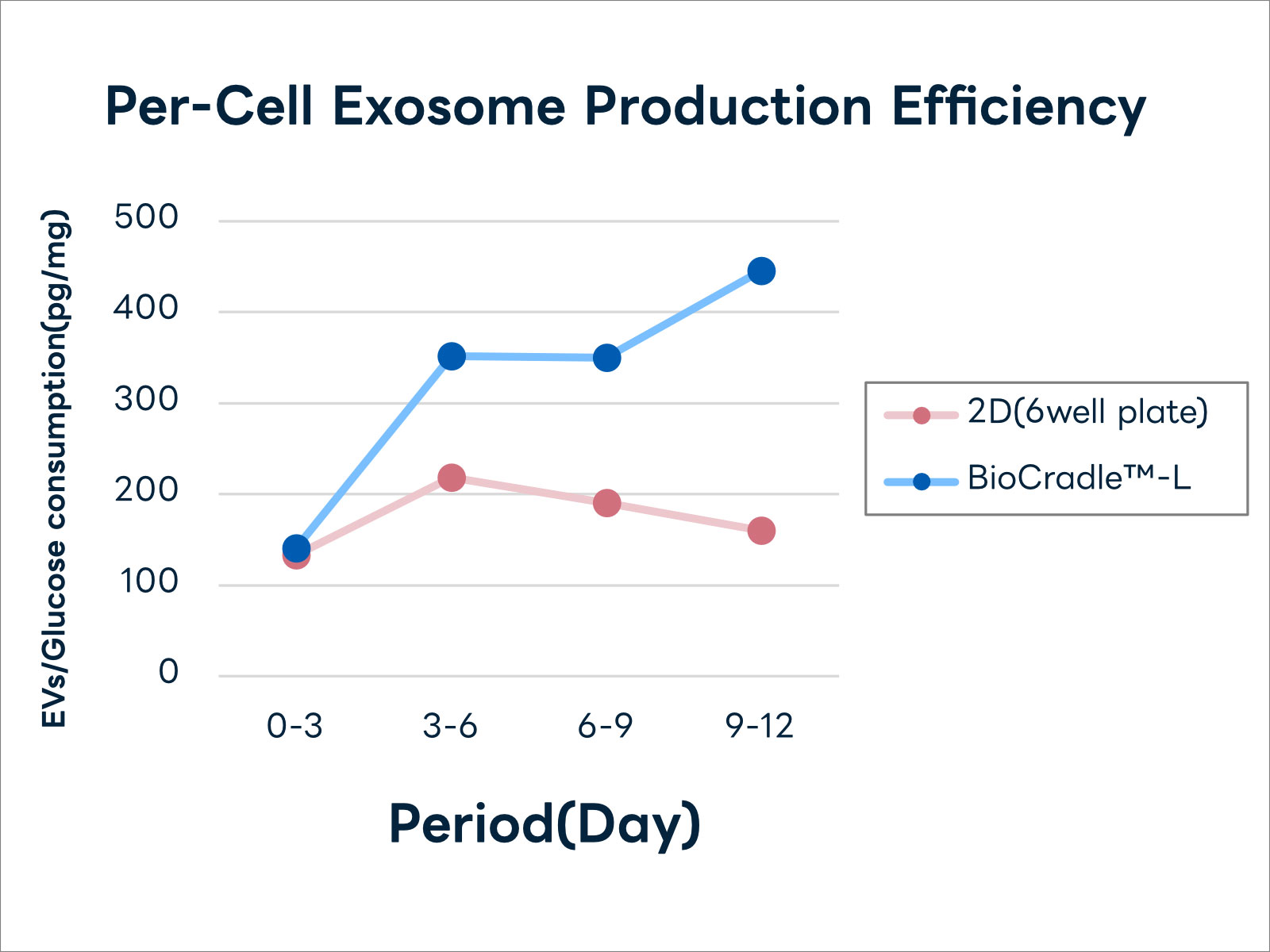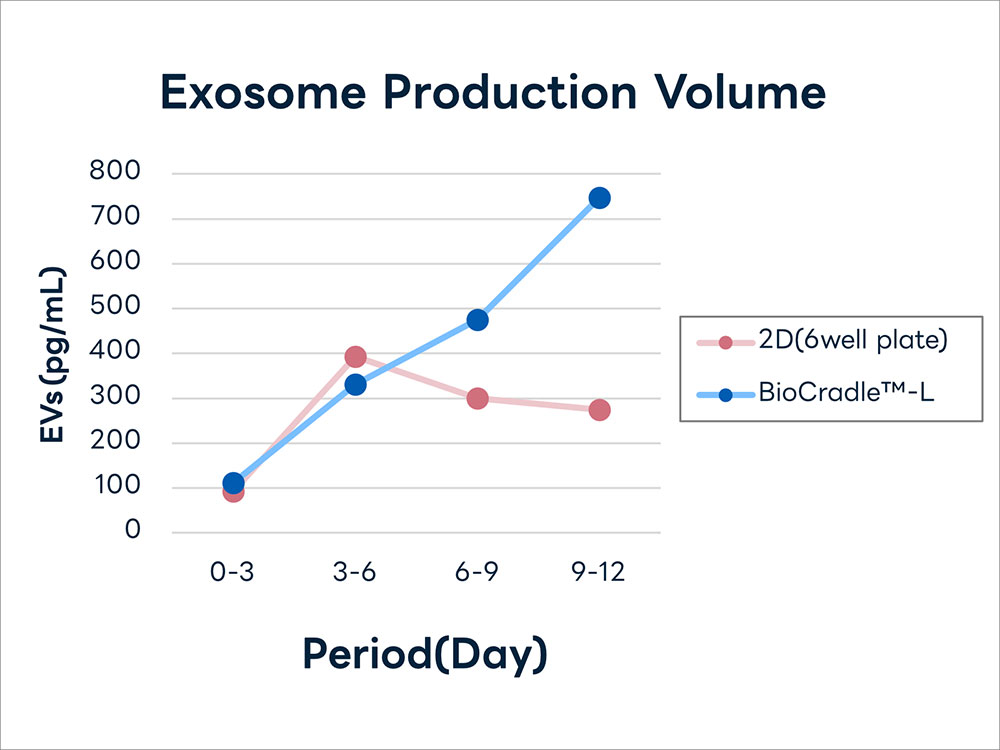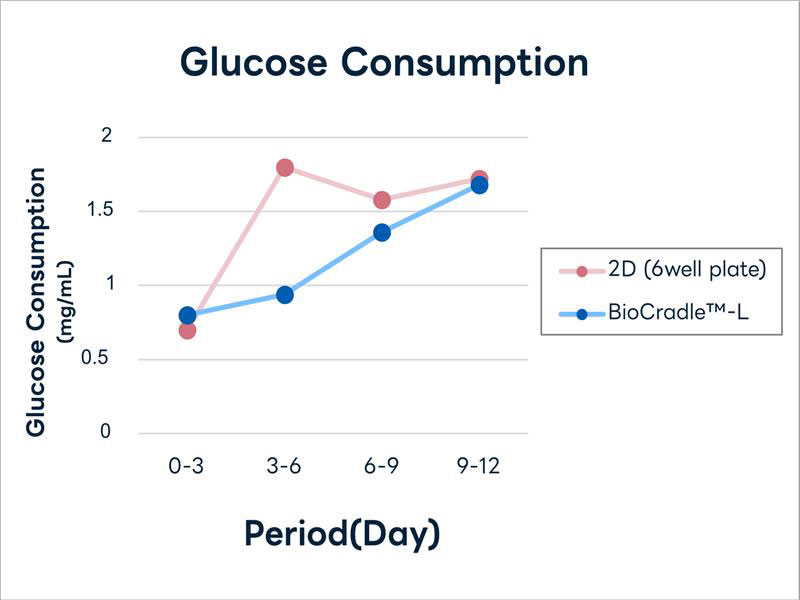HOME > BioCradle™ > Technical Information > Comparison of BioCradle™-L and 2D Culture: Differences in Exosome Production
Comparison of BioCradle™-L and 2D Culture: Differences in Exosome Production

Using BioCradle™-L enables the potential for stable, continuous exosome production over extended periods.
We present data from a study comparing exosome levels in culture supernatants of adipose-derived mesenchymal stem cells cultured with BioCradle™-L versus 6-well plates.
Results
Per-Cell Exosome Production Efficiency
Using glucose consumption as a cell count indicator, BioCradle™-L showed exosome production efficiency of 445.3 pg/mg per cell on days 9-12, while 2D culture achieved 159.8 pg/mg. BioCradle™-L's per-cell exosome production efficiency was approximately 2.8 times higher than 2D culture, suggesting it provides a more suitable culture environment for exosome production.

Supporting Data 1: Exosome Production Volume
With BioCradle™-L, exosome production continued to increase after day 3, reaching 748.1 pg/mL on days 9-12. In contrast, 2D culture peaked at 393.0 pg/mL on days 3-6, then declined to 274.8 pg/mL by day 12. While both methods showed nearly equivalent exosome production in the early culture period (days 3-6), BioCradle™-L produced approximately 2.7 times more exosomes than 2D culture in the later period (days 9-12).

Supporting Data 2: Glucose Consumption
In BioCradle™-L cultures, glucose consumption increased consistently from start to finish (0.8→1.68 mg/mL), indicating that cells proliferated gradually over time. Meanwhile, 2D culture showed rapid glucose consumption increase (0.7→1.8 mg/mL) followed by immediate plateau, suggesting early cell number saturation.

Materials and Methods
Cell Culture Protocol
Human adipose-derived stem cells (PT-5006, Lonza) were expanded in 2D flasks using serum-free medium (ADSC-5, Kojin Bio). Cells were then seeded at 2.8×10⁴ cells/mL density into 6-well plates (2 mL medium per well) or Erlenmeyer flasks (50 mL medium and 100 μg BioCradle™-L per flask). Starting 16 hours after seeding, Erlenmeyer flasks were shaken for 5 minutes per hour at 120 rpm, and medium in both culture systems was completely replaced every 3 days. Cultures were maintained in a humidity-controlled incubator at 37°C, 5% CO₂.
Exosome Measurement
Measured using CD9/CD63 sandwich ELISA kit (Cosmo Bio).
Glucose Measurement
Measured using BF-8M (Oji Scientific Instruments).
Inquiries
If you're interested in more details about this technical information, please feel free to contact us through the link below.
We also accept requests for other materials and complimentary samples.
BioCradle™ is a trademark of Asahi Kasei Corporation.
